How Do I Prune Hydrangeas?
“How do I prune hydrangeas” sounds like a simple question, right? But, to do it correctly, this question needs to be tackled in three parts. We first have to answer:
What kind of hydrangea do you have?
When is the right time to prune the type of hydrangea you have?
What is the best way to prune your hydrangea?
Identifying Hydrangeas
There are SIX different species of hydrangea commonly found in gardens and to know when and how to prune them correctly, you’ll need to determine which type you have. The species will let us know if it blooms on new or old wood, which is critical information to have before getting your pruning shears out. Lop off the buds and you will risk having a subpar showing of flowers in spring! You can identify your hydrangea species through the flowering and leaf pattern.
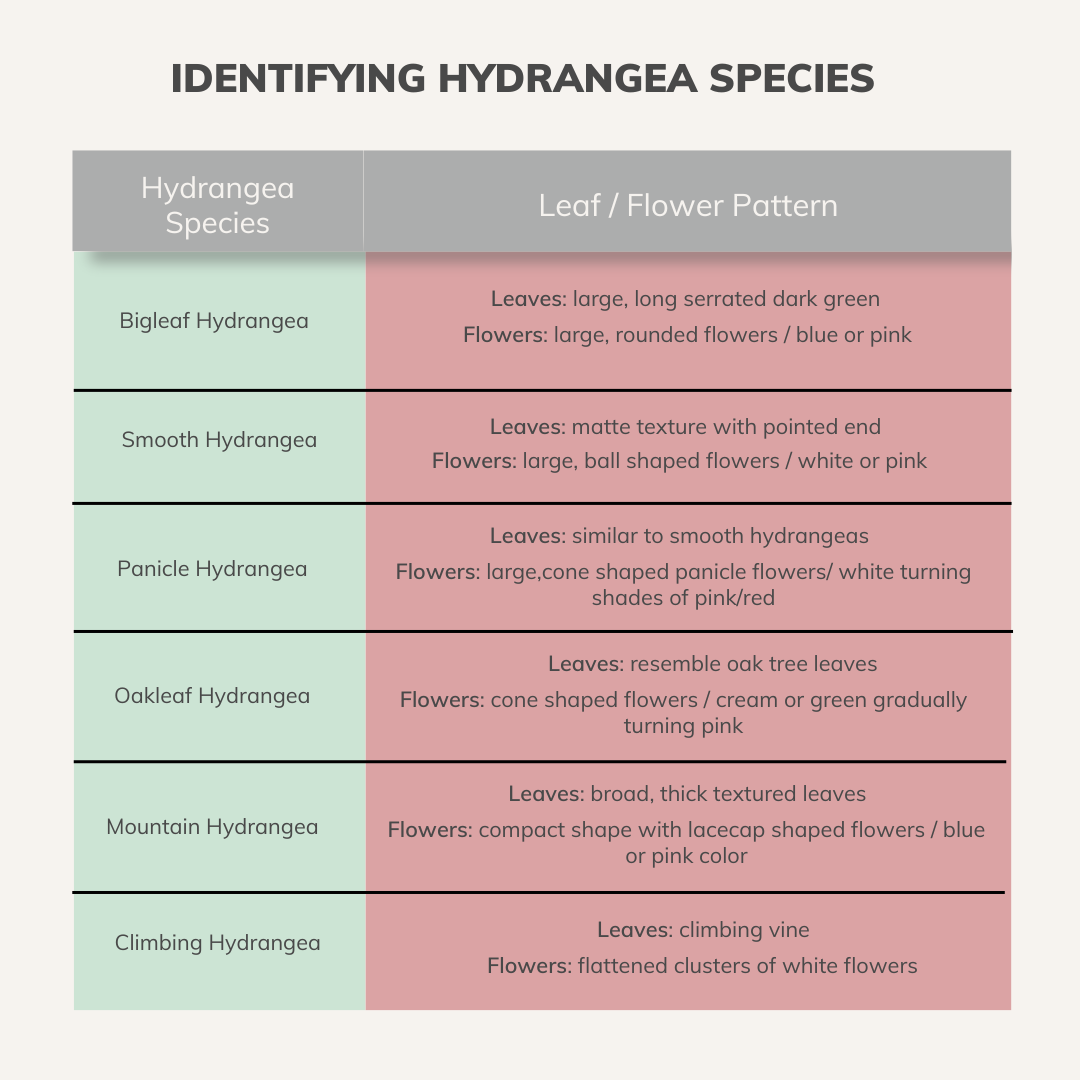
When to Prune Hydrangeas
Once you have successfully identified the type of hydrangea you have, you need to know whether it blooms on new or old wood. This information will guide the timing of your pruning.
New growth: Shrubs that bloom on new growth should be pruned in late fall once the plants have gone dormant or in early spring before new growth has started. This will maximize the amount of new growth and the number of flowers your shrub produces.
Hydrangeas that bloom on new wood:
- Smooth hydrangeas
- Panicle hydrangeas
Old growth: Shrubs that bloom on old growth, should be pruned immediately after their flowers have faded. This gives the plant plenty of time to develop wood that will be “old” by the time the next season’s flower buds emerge.
PRO TIP: Most experts agree that hydrangeas that bloom on old wood do not need aggressive pruning. Rather, you should aim to prune only when needing to shape or maintain their size.
Hydrangeas that bloom on old wood:
- Oakleaf hydrangeas
- Bigleaf hydrangeas
- Mountain hydrangeas
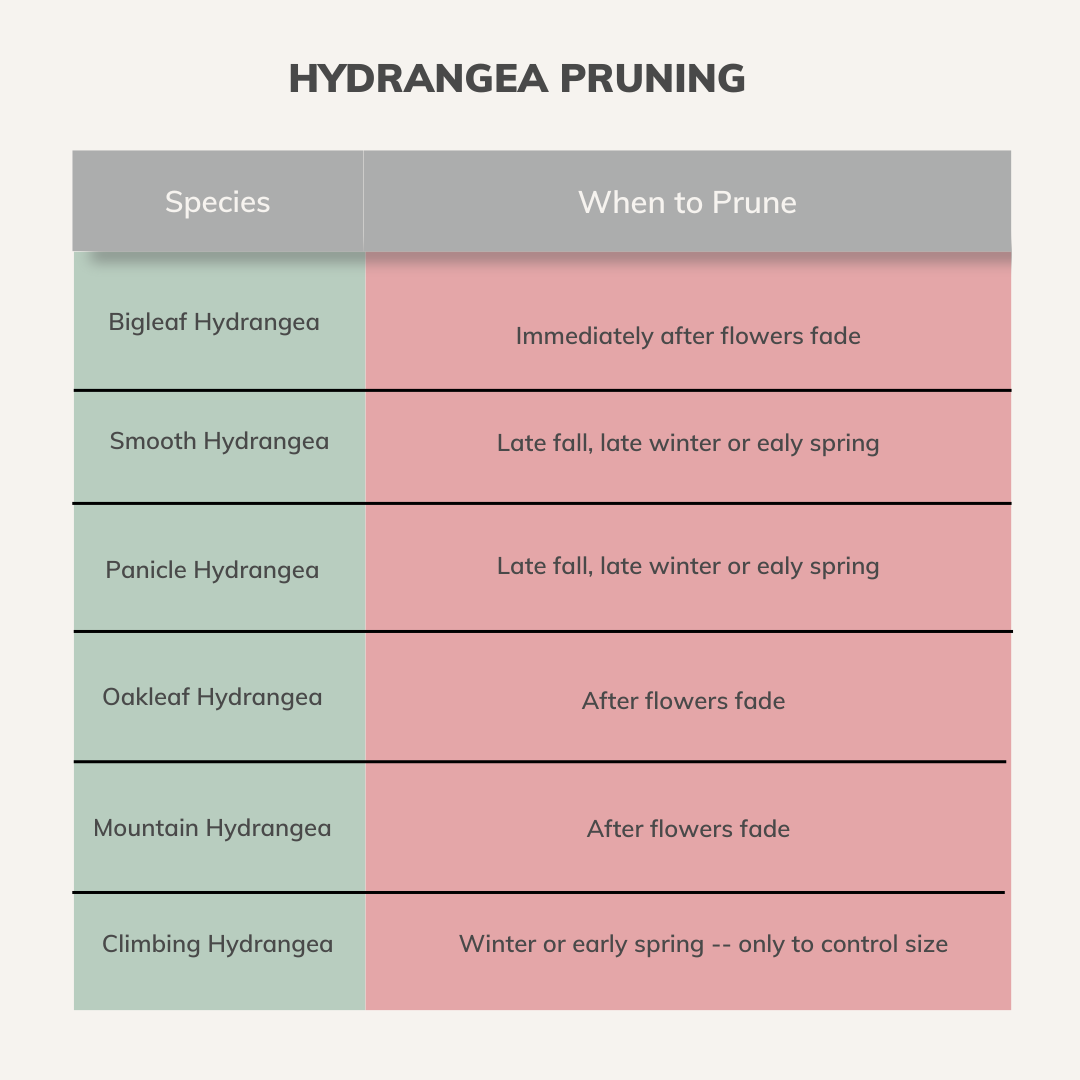
How to Prune Hydrangeas
In general, flowering woody shrubs that bloom on new wood thrive on somewhat aggressive pruning, while those that bloom on old wood require more careful restrained pruning. Hydrangeas are no exception.
The two species that bloom on new wood—panicle and smooth hydrangeas—do well with an aggressive annual pruning that removes as much as one-third of the shrub. So, for example, if your hydrangea is six feet tall, you can safely prune as much as two feet off the top and sides. Be wary of pruning more than 30% of the shrub to avoid removing too much of its framework needed to keep it upright. For best results, prune back stems to just above (1/4”) a fat bud or a healthy set of leaves.
We have experts on our team who know exactly when and how to prune your shrubs to keep them healthy and producing beautiful foliage and flowers. Call (262) 252-4260 or complete a contact form here.
[/av_textblock]

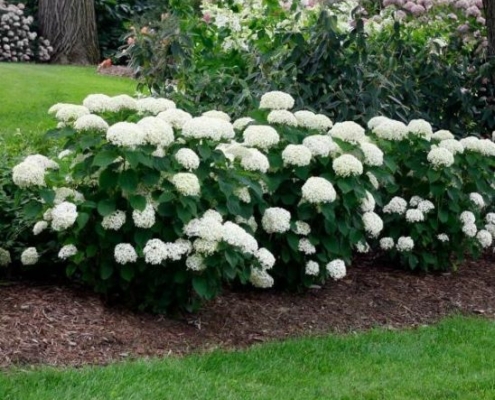
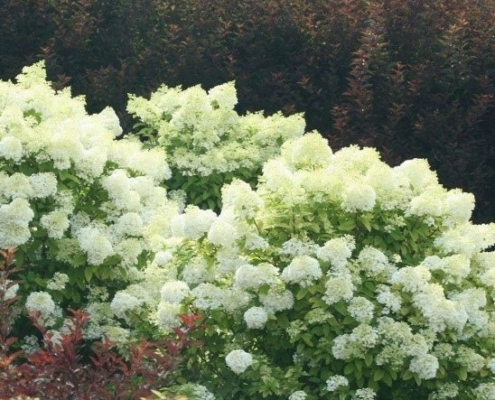
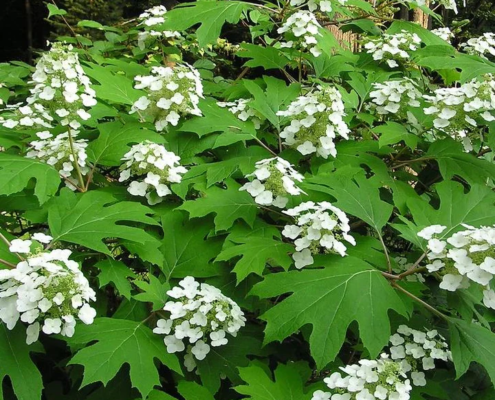
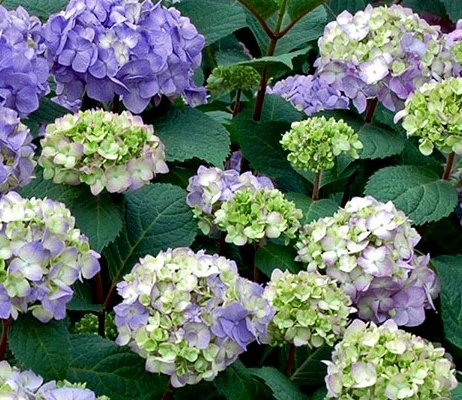
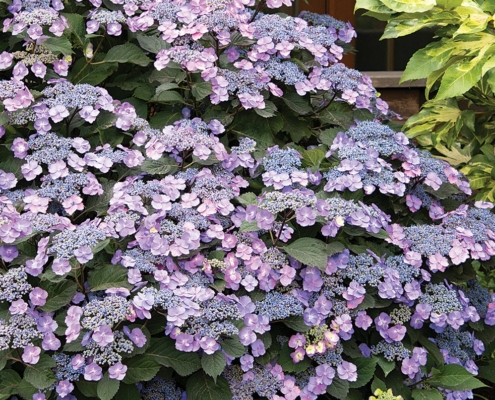
 Flower Care
Flower Care Lawn Maintenance
Lawn Maintenance Trees & Shrub Care
Trees & Shrub Care